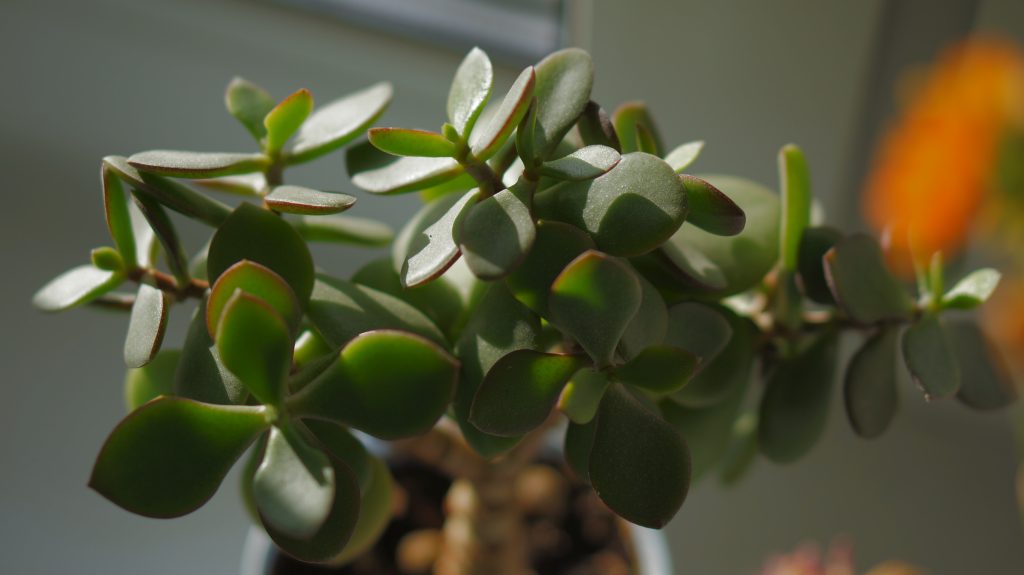Native to South Africa, Jade plants are known for their symbolism of good luck, wealth, and prosperity. These succulents sport green, oval shaped leaves and small pink or white flowers. While they have the ability to bloom, it is unlikely that it will in an indoor setting. When given enough sunlight, the edges of the leaves will turn pinkish-red with sun stress. This is a good sign that your Jade is getting the perfect amount of light! As Jade plants age, their stem begins to resemble a tree trunk, growing thick and bark-like. There are over 300 species of Jade, some able to reach 7 feet in height!. Jade plants are toxic to both humans and pets.
Jade plants will take as much sun as you can possibly give them.
Water using filtered or rain water when soil is 100% dry.
They will thrive in humidity between 30%- 50%, and temperature between 65- 75 degrees fahrenheit.
Jade plants reproduce best from propagated leaves. Remove a healthy leaf, lay it gently on top of some soil, and within weeks roots will start to form! Eventually, a tiny plant will form at the base of the leaf. Let the leaf completely shrivel away before removing it; all the water the new plant needs is coming from that parent leaf.
Jades can droop from both over and underwatering. Overwatering will affect the whole plant, including leaves, stems, and roots. This creates a very unstable, mushy plant. Drooping due to underwatering usually affects the leaves, though the stems might look a little shrivelled. Check the soil conditions of your jade plant to figure out the next course of action. If the soil is bone dry, give your plant a drink; if it is really moist, it might be best to repot your jade into fresh, dry soil.
